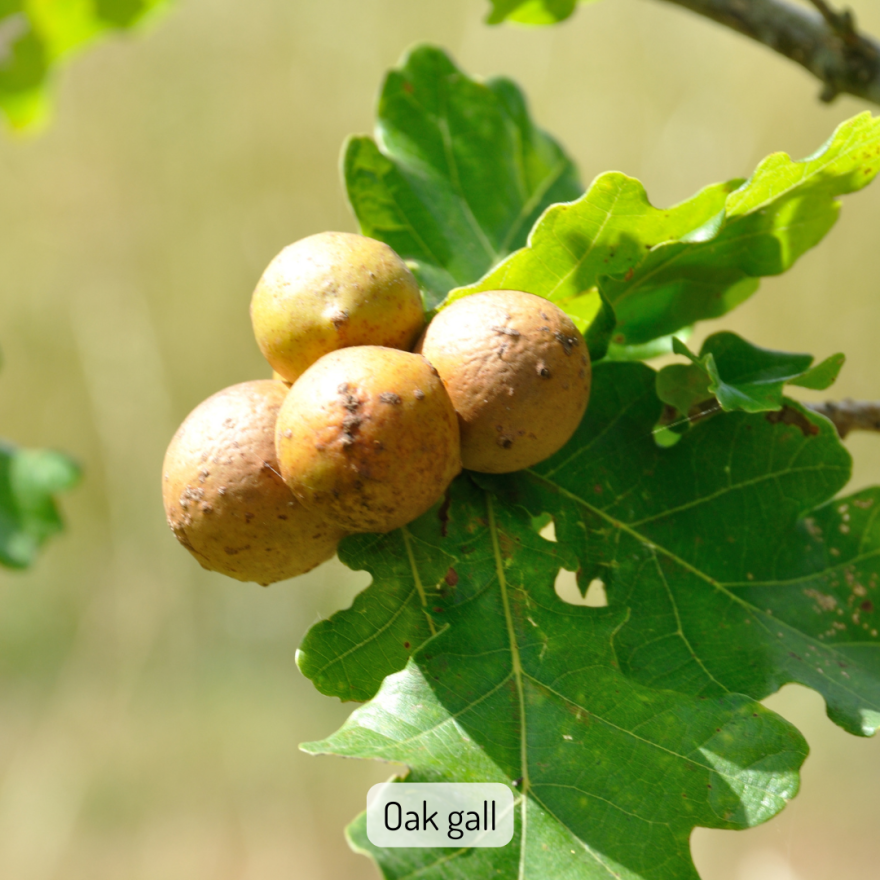John Latimer:
We heard from Dave and his crew down at the Long Lake Conservation Center: They sent in this report.
Dave McMillan:
Hi, Dave McMillan here from Long Lake Conservation Center with this week's phenology report. We had a wonderful visit this week from the educators from the Aitkin school district who came out to visit before they get their school year underway. They got to explore some of the wonders of nature with us. As always nature put on a great show. We had loons otters, lots of cool mushrooms, bumblebees, fresh honey from the long lake hives, and a wide variety of migrating birds. You can check out the full report on longlakecc.org/phenology. But what we wanted to focus on this week are oak tree galls, sometimes known as oak apples. One of the Aitkin teachers was walking around and thought she saw on the ground a bouncy ball: went down and picked it up and it was an oak gall.
And I can tell you these little babies are way more interesting than a bouncy ball! Oak galls are an abnormal plant growth that grow on oak trees, foliage, and twigs that are produced by small oak gall wasps. So essentially what happens is that these little wasps inject their larva into part of the tree leaf, a twig, or another part of the Oak tree and the supercharged hormones from the larva interact with the plant hormones to create these little balls. You know, a lot of people think that these are harmful, that they hurt the trees. They don't, and the wasp that they produce, these little gall wasps are not harmful either. So you don't have to do anything. You don't have to worry. You don't have to remove them. Another interesting little fact, I'm gonna cut this open here, they're red inside. And when you squeeze them, out comes this blood red dye, blood-red liquid. The Ojibwe and the Dakota people that lived in this, uh, this area for millennia used this to dye clothing and other things. So pretty, pretty cool stuff. This is just one kind of gall. There are thousands of different types of galls. These little oak tree galls: keep your eye out for those! They're fun little parts of nature. As always, it is a wonderful time to unplug, get outside, and to live connected.
John Latimer:
Thanks, Dave! Great report that coming from Dave, he's the director down at Long Lake Conservation Center and his group has been joining us throughout the summer and really throughout the year. And we're looking forward to more from them. I'm going to be reconnecting with a lot of schools in the next couple of weeks, and I have a very good hunch that we will be hearing a lot of student voices beginning in a week or two. So stay tuned for that on our talk back. And of course, if you have comments, questions, or observations you'd like to send our way, please do.
Speaking of questions sent our way. You may recall a week ago, Sarah Mitchell, our coordinator, sent along a note from her mother who wanted to know about, and I wish I could quote the exact words, but basically those crazy little beetles that circle around on the water. [My mom called them motor boat zoomie swim bugs.]
And, well, we know them as whirligig beetles, but she called them something else. Anyway, I went back and did a little research about these little bugs. They are beetles and they have a lot of amazing adaptations, including the fact that they have two sets of eyes, one that focuses above the water level and another that focuses below the water level. So, they're actually looking both ways up and down at the same time, and different eyes for below and above water. The other thing that's pretty cool about them is that what you see out on the lake is this little hard oval shell. And you might see these two long legs that are sticking out. Those are the front legs, this is a six-legged insect. The two front legs are not its mode of transportation.
Its back four legs are modified paddles, and they have these hairs on them that sort of fold. So, as they bring their foot forward, the hairs all kind of trail back, but when they bring their foot backward they grab the water and thrust. And it turns out that these, these back four legs have an 85% thrust efficiency. So, they are darn near perfect when it comes to moving, and that's why they move so well. They're really quite well constructed for their job. They have a kind of a waxy surface that makes them kind of difficult to capture. In fact, the antenna of these whirligig are really stunted, really short, but the male antenna have these little suction cups on the end, so that when they find a female that they would like to mate with, they can attach themselves to her because otherwise she's just too slippery. She will just squirt away. It's like trying to squeeze a watermelon seed. If you've caught one of these things, they really can be slippery and hard to get ahold of. You look at those big groups where they're all kind of milling about: the hungry ones are on the outside. And there's a lot of dynamics within that group: male or female, hungry or not. And so when you see that, it's pretty amazing. One final note about them: the little larvae of these little beetles are consumers of mosquito larvae. So God bless 'em. And let's hope there's more whirligig beetles. There ya are!
Heidi Holtan:
<laugh> You just said, "God bless the whirligig beetles" because of the mosquitoes. I like it.
John Latimer:
<laugh> the enemy of my enemy. <laugh>






